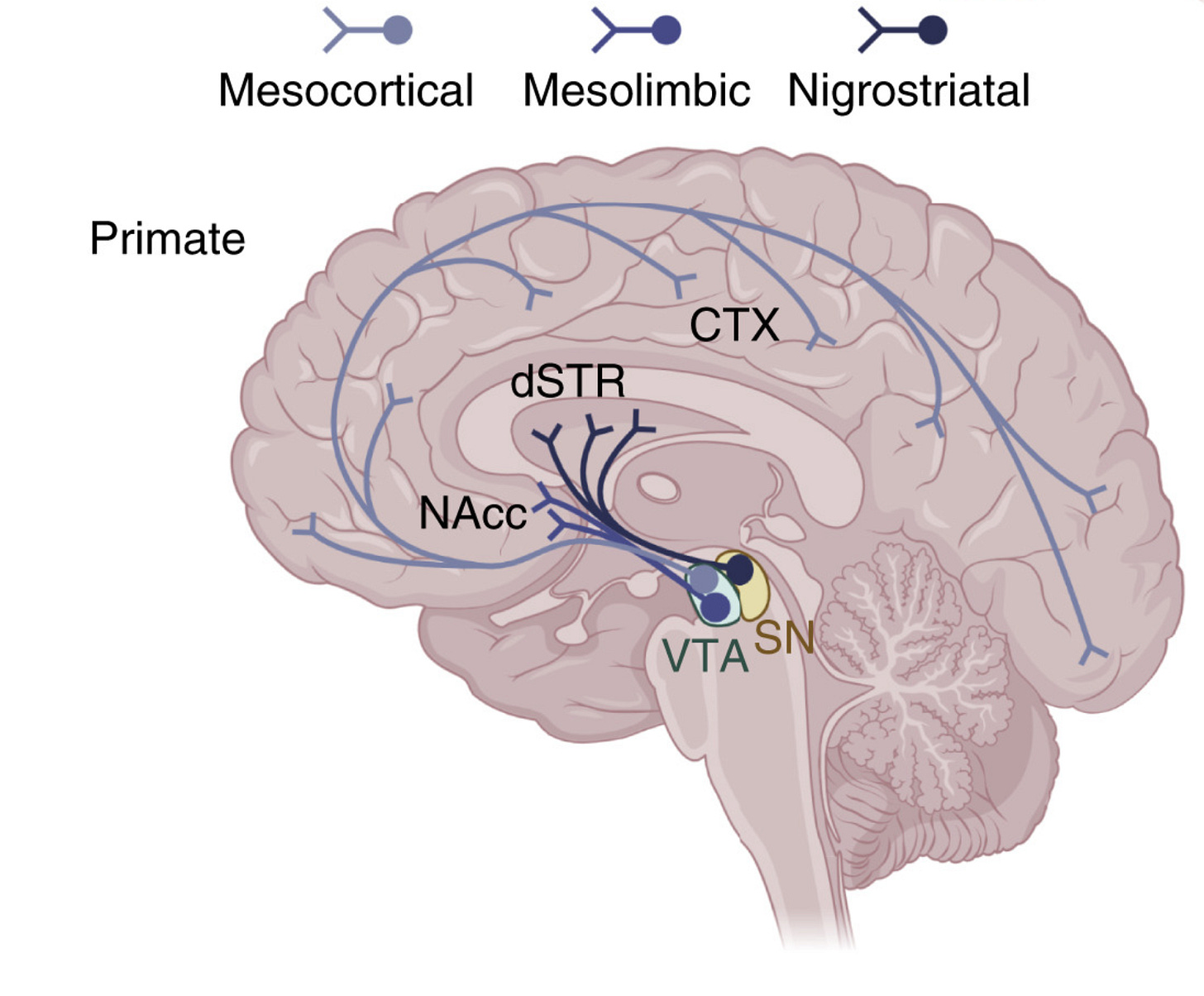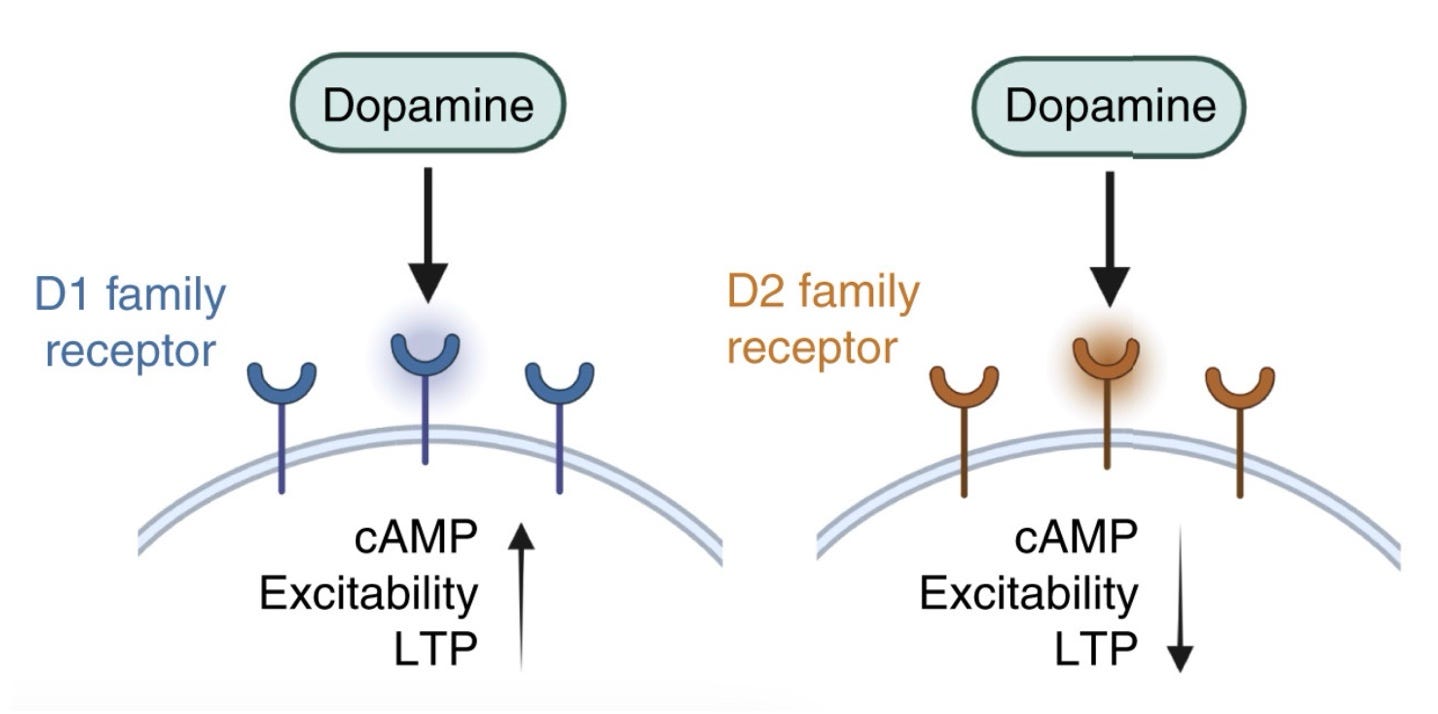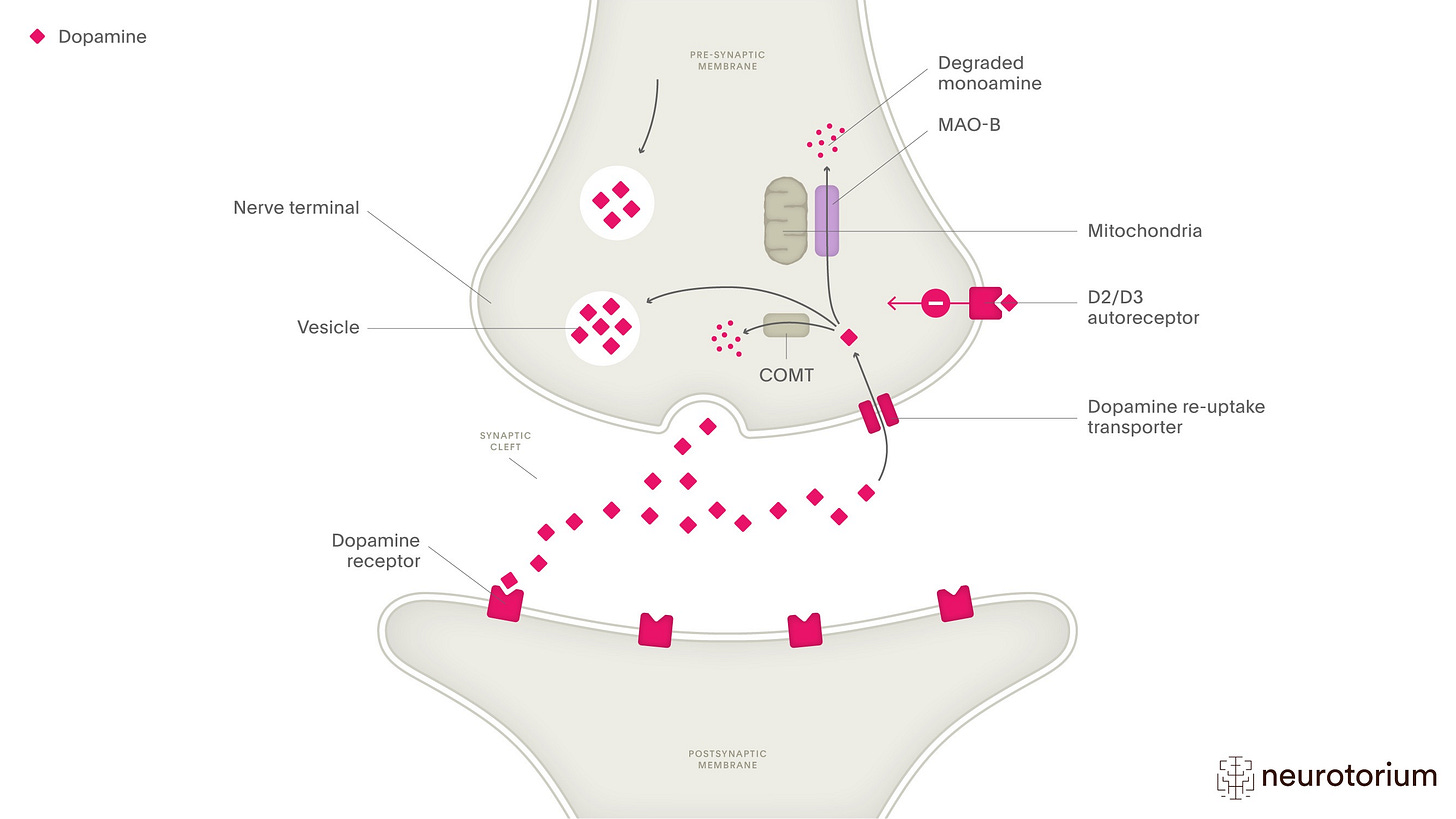How to Leverage Dopamine for Cognitive Enhancement
Understanding Dopamine and Dopaminergic Nootropics
When most people think of a neurotransmitter, they think of Dopamine.
But why?
My guess is that it is due to its mainstream popularity as the “reward molecule”. Dopamine (DA) has essentially become a buzzword as it relates to all the things in today's society that can be associated with an addiction of sorts (social media, smart phones, processed foods, etc), but this is just a small part of the puzzle when it comes to DA’s function in the brain. What you may not know is that DA is a molecule involved in focus, motivation/drive, working memory, and movement in addition to its role in behavioral learning. This means the dopaminergic system is an excellent target for nootropics if your goal is to enhance your cognition and the likelihood of taking action on certain tasks. However, it’s not as simple as just “increase dopamine”. DA is a molecule that is part of several distinct pathways that use different tactics to regulate DA levels… it’s kind of complicated.
Complicated is good in this context though, as it means there are several ways to leverage DA to our advantage, and that is exactly what I will teach you. Throughout the remainder of this article, we will cover the various mechanisms that can be used to manipulate dopamine, the different results you can expect from each of them, and examples of compounds for each mechanism. That comes, of course, after we dive into the neuroscience behind the neurotransmitter so that we understand these potential manipulations.
But without further adieu, let’s dive into the inner workings of everyone’s favorite neurotransmitter, Dopamine.
Overview of the Dopaminergic System
The biggest misconceptions about DA arise from people not knowing that it's part of three different pathways in the brain. That in and of itself tells us that DA does not have just one function, but an assortment of functions that depend on where it is released.
Almost all DA neurons originate from two small nuclei in the midbrain. In fact, there are only 500,000 total dopaminergic neurons in the whole brain out of a total of ~100 billion neurons. Despite that relatively small number of total cells, DA is able to exert immense behavioral effects via its three main pathways.
Mesocortical pathway: VTA → Cortex
Mesolimbic pathway: VTA → Nucleus Accumbens
Nigrostriatal pathway: SNc → Striatum

DA’s influence on focus, working memory, impulse control, and attentional processing comes from its actions in the cortex. This is known as the mesocortical pathway which originates in the ventral tegmental area (VTA) and projects to the cortex.
The name of all these pathways are derived from the location of the dopamine neurons + where they project to. In this example, “meso” means middle because the VTA is located in the midbrain and “cortical” refers to the cortex.
DA’s influence on motivation, drive, and movement comes from its action in the striatum via the nigrostriatal pathway which originates in the substantia nigra pars compacta (SNc). This is the pathway that’s disrupted in Parkinson’s disease, a disorder that results from the death of DA neurons in the SNc and causes issues with movement.
Finally, DA’s influence on behavioral learning, addiction, and motivation (again) comes from its actions in the nucleus accumbens (NAc). This is known as the mesolimbic pathway (“limbic” referring to the limbic system), and is commonly referred to as the “primary reward synapse” due to its role in learning as it relates to rewards/punishments.
Through its action in these pathways, DA stands as a neurotransmitter that when manipulated has the unique potential to both enhance cognition and increase motivation. However, before we get into tools we can use to leverage dopamine for cognitive enhancement, I want to briefly go over the process of dopaminergic neurotransmission. This includes its synthesis, release, clearance from the synapse and action on receptors. In the end, we will have a greater understanding of how dopaminergic nootropics actually work, as well as learn a lot about how the brain actually functions which has its own perks.
Dopamine Synthesis
DA belongs to a group of molecules known as the catecholamines which also includes norepinephrine and epinephrine. These three neurotransmitters are all part of the same synthesis pathways that begin with the amino acids phenylalanine and tyrosine, eventually leading to the synthesis of DA then subsequently norepinephrine and epinephrine in that order.

More TH activity → More DA produced
Less TH activity → Less DA produced
The activity of TH is regulated by both the amount of DA in the cell and activity dependent protein kinases that inhibit or speed up the enzyme's activity to keep a steady supply of DA for the neuron. While these processes are tightly regulated, there are potential compounds out there that directly increase levels of TH or its activity… more on that later though.
Once it has been synthesized, DA is packaged into vesicles via the vesicular monoamine transporter 2 (VMAT2) transporter protein where it will await its release in an action dependent manner.
(For more information on the packaging and release process of neurotransmitters, I recommend checking out the three part Neuroscience Crash Course series I put out here on Substack. Link to part 1 here.)
Dopamine After Release
After its release, DA binds to receptors on the postsynaptic neuron. Therefore, the effect that DA has is dependent on the receptor it binds to, which can be one of two main categories: D1-type and D2-type receptors. D1 receptors increase cyclic AMP (cAMP) in the cell which is going to promote synaptic plasticity and increase the likelihood a neuron fires, while D2 receptors do the opposite and may even inhibit dopamine release by acting as inhibitory autoreceptors on the presynaptic neuron.

DA’s effects on postsynaptic receptors is (like all other neurotransmitters) dictated by the concentration of DA located near the receptor, a factor that is primarily influenced by extracellular dopamine clearance. Simply put, the action of DA is enhanced when extracellular levels are increased. A phenomenon that may occur is extracellular clearance mechanisms are inhibited.
What are said clearance mechanisms?
Well, that depends on where in the brain we’re talking about.
In the striatum, the dopamine transporter (DAT) is the primary method of clearance. DAT is a reuptake transporter protein that sucks excess dopamine from the synapse back into the presynaptic terminal. This serves two purposes: clearing dopamine from the synapse to terminate the signal, and recycling dopamine for future release. However, in the cortex DAT isn’t prevalent, so the norepinephrine transporter (NET) is the primary clearance system there. Then you need to consider enzymes that break down DA inside neurons like catechol-O-methyltransferase (COMT) and monoamine oxidase (MAO), and where they primarily reside. This is going to heavily impact the effect of certain dopaminergic nootropics that act via these mechanisms, since a compound that inhibits DAT is going to elevate DA in a different brain region than one that inhibits COMT or NET resulting in different behavioral effects.

Nootropics that Target Dopamine
With an understanding of the dopaminergic system fresh in our minds, let’s look at ways in which we can manipulate it in order to elevate levels of DA in and outside of our neurons to enhance cognition and motivation, of which there are three main categories:
Keep reading with a 7-day free trial
Subscribe to BowTiedNeuron’s Substack to keep reading this post and get 7 days of free access to the full post archives.

